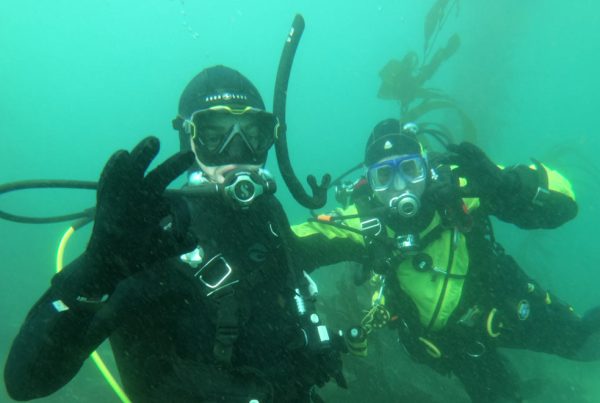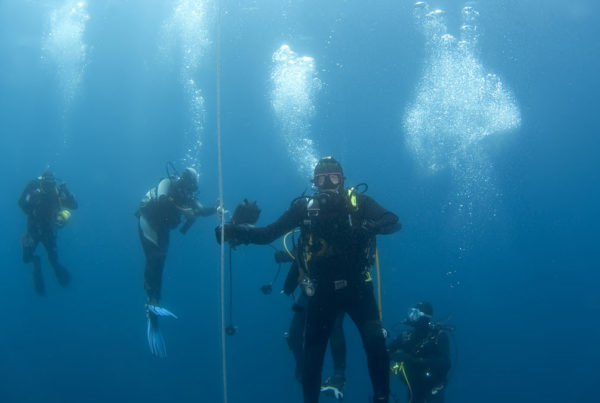Diving on oil platforms has become a popular activity. And rightfully so. These fantastic vertical hard structures far offshore, islands in vast open ocean stretches, attract huge amounts of marine life. Water clarity is generally great, and although the platforms are almost universally in very deep water, even intermediate divers can usually handle the a dive here because the are various levels at a variety of depths.
Knowing a little bit about how an oil platform is laid out underwater will help you navigate this unique underwater environment, get more from the dive, and even increase your dive safety while exploring these unusual submerged opportunities.
LEGS
External support legs extend from the top above, not straight down but rather at an angle. Keep that in mind as you descend down a leg; you are moving away from the center of the platform. The number of legs depend on the size of the rig, depth of water and other factors.
LEVELS
Large horizontal members are at regular intervals, usually depending on the specific rig, but vary between 30 to 50 feet apart. If possible, find out from the divemaster the distance between each level and at what depths each level lies. With this knowledge, dive planning becomes easier. But your planning need not be limited to just these horizontal levels.
DIAGONALS
Diagonal members run at an angle from one leg to another, usually intersecting at the point where the next horizontal member joins the next leg. Diagonals can be useful in navigating between legs and levels at the same time. Between the diagonals and the legs, you can choose your desired depth.
NODES
Nodes are the juncture of several members, including diagonals and horizontals with the external and internal legs, and should be of key interest to you as a divers.
Nodes have a huge amount of nooks and crannies, the ones on the external legs being the best. On the external legs you can look over the marine life on the rig while keeping an eye out on the blue water for unusual pelagic animals that will float by. On the nodes look over, under, sideways and more. You will find just about everything — dozens of invertebrates, small and big fish in a rainbow of colors and more.
RISERS
Risers are small (relatively speaking) pipes attached to legs of the platforms running from the bottom up to the surface. Risers are usually pipelines carrying oil to and from other rigs or submerged wellheads and sometimes for cables. They are attached with riser brackets. These are good places to ascend and do safety stops.
ANODES (A.K.A. “ZINCS”)
Anodes are odd looking attachments, usually to horizontals and diagonals that provide cathotic (electro-chemical) corrosion protection to the steel members of the platform. Anodes are another place to “hang-on” to in the surge.
PLATFORM INTERIOR
Inside the structure underwater is a dark and foreboding place. Drilling risers (bigger and go up the center of the rig used for drilling) fit into “bells.” There is a lot of marine life in these areas, but you’ve got to have a light if you are going to explore here. And if the rig is actively drilling, it will be a noisy place.
ON THE BOTTOM
The shallowest platform along our coast that a dive charter boat can get permission to dive (private parties are not granted permission) is in 165 feet of water. Most are much deeper. Divers interested in making deep dives to the bottom of oil platforms will be disappointed and putting themselves in danger. Visibility is notoriously poor but, more importantly, there is inevitably dangerous debris in which divers can become easily and seriously entangled. Do not dive here.










